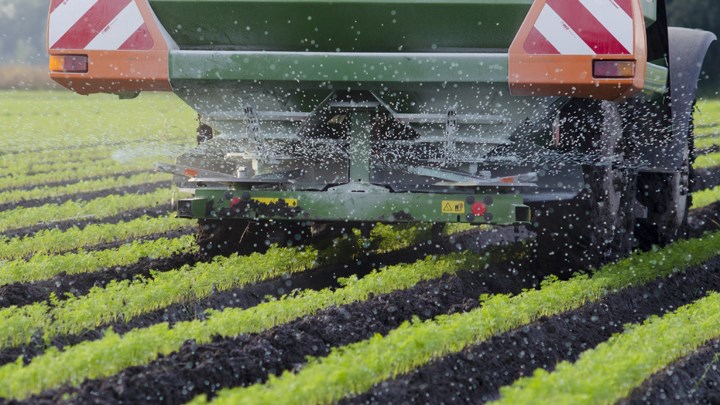Jupiter Ionics announced as a finalist for the Spinoff Prize 2023

JUPITER Ionics, a spinoff from Monash University, Australia that aims to produce ammonia in a zero-CO2 process has been made a 2023 finalist for the Spinoff Prize. The competition was established to showcase academic entrepreneurs and their spinoff companies in the early stages of development.
Founded in 2021 by Douglas Macfarlane, a Sir John Monash distinguished professor at Monash University, Jupiter Ionics aims to make ammonia (NH3) by splitting nitrogen apart using a lithium-mediated electrochemical pathway.
Ammonia is a crucial ingredient in the production of synthetic fertilisers, which are used around the world to grow crops.
Such is the demand for ammonia that around 150m t/y is produced, usually via by the industrial Haber-Bosch process, a reaction that combines nitrogen from air with hydrogen derived mainly from natural gas (methane): N2(g) + 3H2(g) ⇌ 2NH3(g).
This exothermic and reversible reaction needs a temperature of 400°C and pressure of about 150 bar (15 MPa), and as the process is generally reliant on fossil fuels, estimates put Haber-Bosch as being responsible for 1.5% of global carbon emissions.
Jupiter Ionics’ technique on the other hand uses air, water, and renewable electricity, and is scalable due to its modular design. Housed within a unit the size of a shipping container, the technology is based around the MacFarlane Simonov Ammonia cell, named for the Jupiter Ionics researchers that developed it. Nitrogen is fed into one side of the cell and water to the other side. Hydrogen atoms are stripped from the water molecules in the form H+ (protons) at the anode, and then transported across the cell. Here, lithium that has reacted with nitrogen to form the intermediate lithium nitride (Li3N), then combines with H+ ions to release ammonia and regenerate the lithium.
The ammonia is then extracted from the cell, and stored as a liquid under moderate pressures for use in a range of applications. As no CO2 emissions are generated during this process, Jupiter Ionics says its product can be labelled “green ammonia”.
The Spinoff Prize was established by Nature Awards, which is backed by the journals publisher Nature, in partnership with science and technology company Merck. Launched in 2020, it awards €30,000 (US$33,000) to one of five finalists who have competed in a live-streamed pitch slam and Q&A session.
The judging panel — who come from the worlds of research, technology transfer, venture capital and business development — will look for spinoffs that translate original, high-quality scientific research into products and services that address market problems and are well positioned to make a positive impact on society.
Overcoming the selectivity challenge
The idea of splitting-up nitrogen molecules to make ammonia using an electrical current rather than high temperatures and pressures, is at least 100 years old. However, not much progress has been made as the process is prone to a side reaction whereby the cell preferentially combines pairs of protons to produce hydrogen gas instead of ammonia.
It is a problem known as the selectivity challenge, and it is described by a metric called faradaic efficiency (FE). Until a few years ago, ammonia selectivity of only 5–20% FE had been reported.
After much experimentation with several candidate electrocatalyst systems, Juniper Ionics tried lithium and found success. “It had become quite well known in the lithium battery world that lithium will react with nitrogen,” Macfarlane recalls. “That’s the tantalising step, that you can bust open the nitrogen molecule with lithium.”
The company are now reporting ammonia selectivity of 100% FE, and are working on moving up from a small-batch operation to a scalable reactor that produces ammonia in a continuous stream. This will require both electrodes in the cell carrying the same current.
Irina Simonova, an electrochemistry researcher at Jupiter Ionics explains: “Separately, the anode side and the cathode side of the flow process are now working well. We are now focusing on getting the two sides working well together.”
At the moment each electrode has its own optimum current per unit area (the current density) and work is underway to tune each electrode’s area and thickness to achieve the current-density sweet spot.
Along with focusing on producing green ammonia for fertiliser, the company also wants to branch into energy.
Bob Gatte, a judge for the Spinoff Prize 2023, said that energy offers potential upsides on top of Jupiter Ionics’ main focus. “Now, they have to prove the technology is scalable,” Gatte said. Gatte is also chief executive of HighT-Tech in College Park, Maryland, which uses super-fast heating to make alloys to make efficient catalyst that are much cheaper than conventional alternatives. HighT-Tech won the Spinoff prize in 2021.
Recent Editions
Catch up on the latest news, views and jobs from The Chemical Engineer. Below are the four latest issues. View a wider selection of the archive from within the Magazine section of this site.




